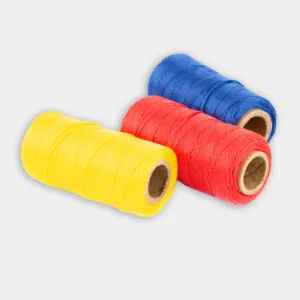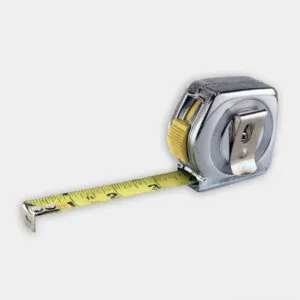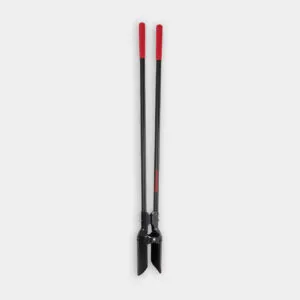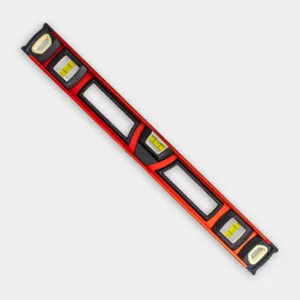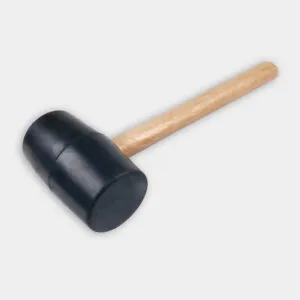Project details
Skill
Cost
Estimated Time
We may be compensated if you purchase through links on our website. Our team is committed to delivering honest, objective, and independent reviews on home products and services.
A vinyl fence can enhance your property’s privacy, security, and visual appeal. This durable and low-maintenance option is particularly suitable for yards with pools, as it meets most local code requirements. House One editor and do-it-yourself (DIY) expert Jenn Largesse demonstrates the key steps in the video above, and you can follow the guide below for more step-by-step instructions.
Planning Your Vinyl Fence Installation
Before you begin the installation process, proper planning is important for a successful outcome.
Checking Local Codes and Regulations
Always start by consulting your local building department for specific fence requirements. For yards with pools, regulations often mandate the following:
- Minimum fence height of 4 feet
- Maximum picket spacing of 4 inches
- Self-closing and self-latching gates
Failing to comply with these regulations could incur fines or necessitate modifications post-installation.
Marking Your Property Line
Accurately marking your property line helps avoid disputes with neighbors and potential legal issues. Consider these steps:
- Review your property survey.
- Consult with adjacent property owners.
- Hire a professional surveyor if uncertain.
A well-marked property line confirms that your fence is precisely where it should be, preventing future conflicts.
Contacting Utility Companies
Before you start digging, it’s incredibly important to locate underground utilities. Contact your local utility location service, which is typically free of charge. They will mark the locations of:
- Electric lines
- Gas pipes
- Water mains
- Sewer lines
Striking a utility line can be dangerous and expensive to repair, so this step is nonnegotiable.
Cost of Vinyl Fence
The cost of installing a vinyl fence will depend on various factors but expect to pay between $15 and $40 per linear foot for a standard 4- or 6-foot-tall vinyl fence.
Laying Out the Fence Line
Properly laying out your fence line helps create a straight and professional-looking installation. Follow these steps:
- Drive stakes into the ground at fence corners.
- Run a string line between the stakes.
- Use landscape paint to mark posthole locations according to manufacturer specifications.
A precise layout can help verify all posts and panels align correctly, contributing to your fence’s durability and appearance.
Installing Vinyl Fence Posts
The foundation of a sturdy vinyl fence lies in properly installed posts.
Digging Postholes
Postholes must be deep enough to provide stability and meet local frost line requirements. Ensure you do the following:
- Dig holes 3 feet deep to get below the frost line.
- Use a posthole digger for narrow, precise holes.
Deep, narrow holes provide a solid foundation for your fence, reducing shifting risk.
Setting Posts in Concrete
For maximum stability, set your vinyl fence posts in concrete with the following steps:
- Fill the hole with concrete mix.
- Slide the post into the wet concrete.
- Use a level to confirm the post is plumb.
- Adjust the post height so the bottom rail mortise is slightly above ground level.
- Backfill the hole with excavated dirt.
- Allow the concrete to cure for one to two days before continuing.
Concrete anchors the posts firmly, providing long-term stability even in adverse weather conditions.
Installing Vinyl Fence Panels
You can install the fence panels once you set the posts and the concrete has cured.
Installing Bottom Rails
Start by installing the bottom rails between posts using the following steps:
- Insert the steel-reinforced bottom rail into the post mortises.
- Use locking rings to secure the rail in place.
Secure bottom rails provide stability for the entire panel structure.
Adding Pickets
Next, install the vertical pickets:
- Slide pickets into the bottom rail channel.
- Verify that there is even space between pickets and that they’re plumb.
- Trim pickets as needed to fit the fence line.
Properly spaced pickets enhance both the appearance and security of your fence.
Attaching Top Rails
Complete the panel by adding the top rail and following these steps:
- Slide the top rail over the pickets and into post mortises.
- Secure the rail with a screw from inside the post.
Top rails lock the pickets in place, ensuring overall panel stability.
Installing Post Caps
Post caps not only enhance the appearance of your fence but also protect the posts from water intrusion. Here’s how to install post caps:
- Apply polyvinyl chloride (PVC) adhesive to the inside of the cap.
- Press the cap firmly onto the post top.
These final touches add a polished look to the fence while improving its durability.
Hanging Vinyl Fence Gates
If your fence design includes gates, install them last, which will help with accurate alignment and functionality. Do the following:
- Attach gate hardware to the posts.
- Hang the gate, ensuring it’s level and operates smoothly.
- Adjust hinges and latches as needed.
Properly installed gates provide secure and convenient access to your enclosed yard.
Vinyl Fence Maintenance and Care
One of the primary advantages of vinyl fencing is its low maintenance requirements, though some basic care will help keep your fence looking its best. Regularly washing the fence with soap and water will remove dirt and debris, and an annual inspection for any damage or loose components can promote longevity. It’s important to avoid using abrasive cleaners or power washers, as these can damage the vinyl surface.
Inspecting for Damage
We recommend regularly inspecting your fence for signs of wear or damage to maintain its condition. Look for cracks, breaks, or any discoloration, and make sure that all screws and fasteners are securely in place. Addressing necessary repairs promptly will help prevent minor issues from escalating into more significant problems.
Cleaning Tips
Use mild soap and water to clean your vinyl fence routinely. Avoid harsh chemicals that can erode the vinyl surface, and use a soft brush to scrub away stubborn dirt and stains. Be sure to rinse thoroughly to remove any soap residue.
Seasonal Maintenance
Different seasons can present unique challenges for your fence. In winter, it’s important to clear snow buildup to prevent weight-related damage, while in autumn, removing leaves and debris from around the fence base is necessary. Spring and summer are ideal for giving the fence a thorough wash and inspection to maintain its appearance and integrity.
Our Conclusion
Installing a vinyl fence is a manageable DIY project that can greatly enhance your property. Proper planning, the right tools, and attention to detail can achieve professional-looking results. Remember to check local codes, especially for pool enclosures, and prioritize safety throughout installation.
Resources
Jenn and John from Southway Fence install a Chesterfield Smooth White Vinyl Fence. The fence is manufactured by Bufftech, a CertainTeed brand. Jenn demonstrates how to dig a posthole with a posthole digger. John sets the vinyl post in quick-set concrete and uses a level and string line to finalize its position.
Jenn and John insert the steel-reinforced bottom rails between the posts, and then tap the vertical panel pieces into the groove with a rubber mallet—making trims to their height and width with a miter saw and table saw as needed—before capping them with the top rail. They use a drill driver to install a set screw and then secure the caps with PVC adhesive. Lastly, they hang the gate hardware and gate using a drill/driver.
